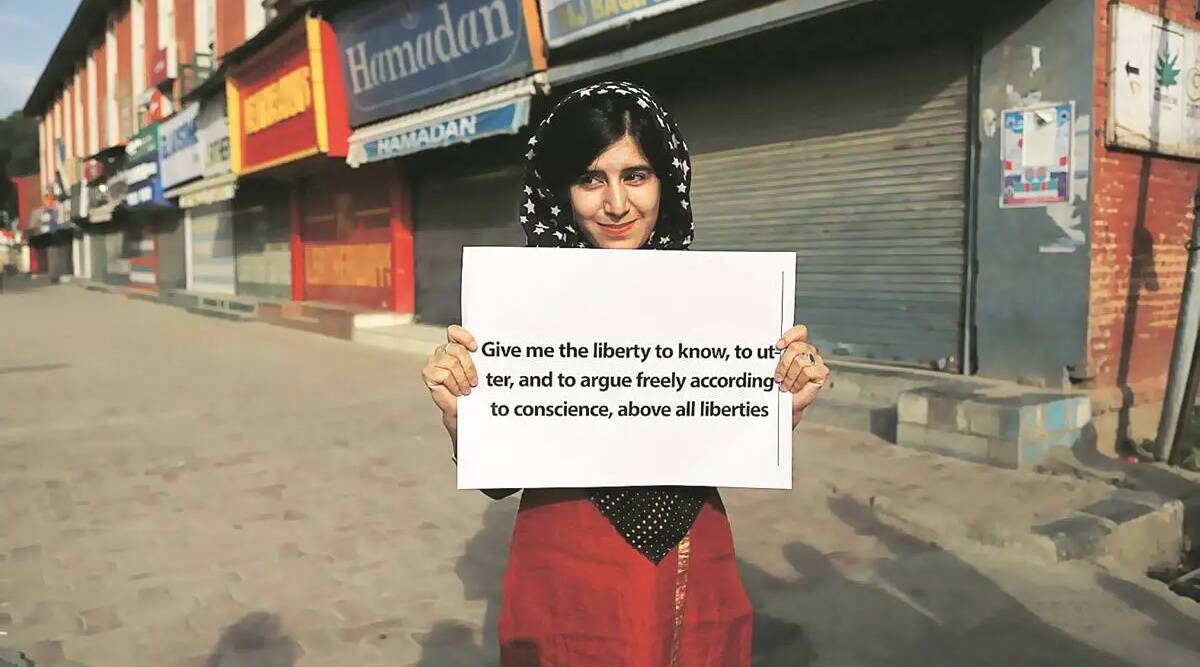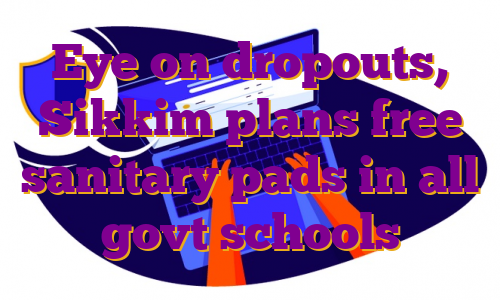A fact finding committee (FFC) of the Press Council of India (PCI) has found that the “news media in the Jammu & Kashmir region, and especially in the Valley is slowly being choked mainly because of the extensive curbs imposed by the local administration”.
🗞️ Subscribe Now: Get Express Premium to access the best Election reporting and analysis 🗞️
“There is also the threat of violence by the militants which acts as a deterrent,” the committee has said in its report that was submitted last week.
The FFC was set up in September 2021 by then PCI chairman Justice (retd) C K Prasad to look at the state of the media in Jammu and Kashmir after PDP leader and former Chief Minister Mehbooba Mufti wrote to the Council.
“There is a long list of journalists who have been individually harassed. The object is to create a fear and intimidation to fall in with the government line,” the FFC report says.
According to the report, “normal lines of communication between the local government administration and journalists has been disrupted” because of the government’s “suspicion that a large number of local journalists are sympathizers of the militants’ cause”.
Lt Governor Manoj Sinha had “frankly told the FFC that many journalists were of ‘anti-national’ persuasion”, the report says. “He (Sinha) conceded that when he was first appointed, he used to encourage open press conferences, but now had gone back to a ‘selective engagement’ with preferred journalists.”
The three-member committee, comprising Prakash Dubey, Suman Gupta, and Gurbir Singh, recorded “numerous cases of journalists being subject to interrogation, threatened and made to fill irrelevant profiling documents”.
Some journalists had been “summoned to the dreaded ‘Cargo Centre’ for questioning — a location reserved for interrogation for armed militants”, the report said. Many journalists spoke about “the constant harassment they faced in the line of duty from security forces. These ranged from accusations of aiding the ‘separatists’ to lengthy interrogation in police camps, to detention and arrests for circulating ‘fake news’”, it said.
The police had “conceded to the FFC that as many as 49 journalists have been arrested and charged since 2016, not a small number considering that J&K has a very small press corps.
“Of these 8 have been arrested under the Unlawful Activities (Prevention) Act (UAPA), which makes bail almost impossible. The police case is many journalists indulge in ‘anti-national’ activities.”
The committee recommended that “those indulging in any criminal acts, are not journalists pursuing their profession”, and if a journalist “is bearing arms or carrying grenades and other ammunition, he is not a journalist; he is a militant, and should be treated as such”.
However, the security establishment “cannot label writing against government policies, or quoting a family or civilian sources in a story about excesses of the armed forces, or tweeting a point of view as ‘fake news’ or ‘anti-national activity’ and then arresting the journalist for sedition”, the FFC said.
It is “not the business of journalists to support government policies or development work. A journalist’s job is to report the news as it happens, even if it is unpalatable to government officials”, the report underlines.
“A conflict zone has many players and many aspects of events that unfold. A journalist cannot and should not ignore the government version; at the same time, he is not the spokesperson of the government.”
The FFC found that “in the guise of information gathering, threats and various forms of intimidation by the police have become part of the new ‘normal’ in the Kashmir valley, particularly after the imposition of central rule since August 2019”.
It expressed concern that “the public relations work of various government departments has been taken over by the Police”, and recommended that “this should cease as it is against the letter and spirit of the functioning of the various arms of a democratic government.”
Journalists, the committee said, “rely on communication networks like the Internet, and access to events and persons, to gather and transmit news”, which “a government has the power to snuff…out as we have seen in the case of J&K”.
It noted that the suspension of mobile Internet whenever there is a conflict, and denying access to the scene of an armed encounter are ways to prevent free and fair news gathering in J&K. These “policies must be reversed”, the committee said.
“Journalists must be allowed to go about their work as professionals, as long as they do not hinder normal security operations,” the report said.
“It is also noticed that the government establishment has denied normal privileges like ‘accreditation’ and freedom to travel locally and abroad… By choking lines of communication and a free flow of reporting, the government will only encourage the spread of rumours and hearsay, which is in the long run detrimental to everyone.”
The committee said “there is no convincing reason” for why the Kashmir Press Club was “superseded and put in cold storage”. Its registration should be restored, “and government officials should not interfere is the election process of what is essentially a private body of news persons”, it said.
The report recalled that in her letter to the Press Council, Mehbooba Mufti had mentioned that journalists who are summoned by the police are made to fill a questionnaire “which is suggestive that the person might have links with ‘anti-national’ forces”. Among the 25 questions are those on the journalist’s “political allegiance”, “details of property owned”, and “relations in Pakistan”.
Inspector General of Police Vijay Kumar had “no hesitation in conceding that there exists a programme to profile journalists working in the J&K region”, the report said. It quoted the officer as saying, “Our aim is to profile 80% of Kashmiris, and we will do it for journalists too.”
!function(f,b,e,v,n,t,s)
{if(f.fbq)return;n=f.fbq=function(){n.callMethod?
n.callMethod.apply(n,arguments):n.queue.push(arguments)};
if(!f._fbq)f._fbq=n;n.push=n;n.loaded=!0;n.version=’2.0′;
n.queue=[];t=b.createElement(e);t.async=!0;
t.src=v;s=b.getElementsByTagName(e)[0];
s.parentNode.insertBefore(t,s)}(window, document,’script’,
‘https://connect.facebook.net/en_US/fbevents.js’);
fbq(‘init’, ‘444470064056909’);
fbq(‘track’, ‘PageView’);
.




